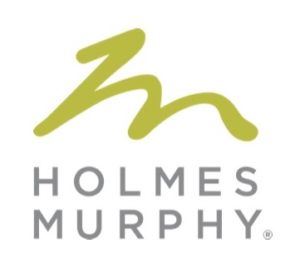The Great Resignation and Its Impact On Safety
Whether you call it the Great Resignation or the Great Reshuffle, many businesses are being affected by the movement of employees into and out of their organizations. !e ripple effects of employee turnover are often significant, impacting productivity, customer loyalty, product quality, employee wellbeing and engagement.
Amid all the disruption, one area that often attracts little notice is employee safety. However, it can also be one of the most critical points of emphasis. Here are just a few of the ways safety is impacted.
ELEVATE THE NEED FOR PHYSICAL SAFETY
Maslow’s hierarchy suggests that safety is a core need for every person. Once we meet our basic needs of food and shelter, we seek a place of safety where we experience order, predictability, and control. Absent a physically safe environment, workers may never be able to reach the next level of psychological security. Employees shouldn’t fear that what feeds their family may also injure or kill them. When this fear exists, the stress it creates can be the catalyst to start looking elsewhere for employment.
Employers should consider employee safety as critical to retention and morale. A safety hazard that hasn’t yet resulted in an injury still presents risk — creating uncertainty in the minds of workers as to whether your workplace is where they want to spend a significant portion of their lives.
In uncertain times, you’ll have an advantage if your operations are as safe as possible — and provide workers with the certainty they desire.
FOCUS MESSAGING ON TOTAL WORKER SAFETY AND HEALTH
For as long as hazards have existed in occupational settings, organizations have outwardly stated the goal is to keep workers safe “on the job.” However, today’s environment encourages a more holistic look at total worker health and safety on an around-the- clock basis.
My colleague recently made a revolutionary statement: “We aren’t just trying to get employees home safe at the end of the day. We are working to ensure employees make it back to work the next day.”
The mental health of our employees is directly tied to presenteeism, which refers to the concept that workers are physically present but may not be mentally present due to thinking about other challenges in their lives — personal, financial, relationship, etc., when the job requires focus. When the worker is thinking of everything but the job, accidents are much more common.
To combat the presenteeism risk, organizations can implement total worker health concepts into their safety program. Good organizations, for example, might talk about the importance of lockout/tagout and hazardous energy control. Great organizations go a step further — teaching workers how to cope with work/life stressors, fatigue, and other “whole person” safety topics. In doing so, they ensure employees will be focused and remember to do what their training taught them to do.
Organizations demonstrating this overall care for workers by integrating both on- and off-the-job safety topics generally find employees are more engaged than when the training is isolated to only those items related to workplace safety.
BUILDING COMMUNICATION
If your organizational culture and engagement is not as strong as you’d like it to be, safety is often the easiest bridge to begin communication.
Years ago, Paul O’Neill was charged with turning around a struggling Alcoa. By many accounts, his initial speech to investors was labeled as a complete failure. Why? Instead of focusing on the usual suspects of growth, new markets, etc., O’Neill outlined his plan for “worker safety.”
O’Neill had the last word, however. Within a year of his divisive speech, Alcoa’s profits would hit an all-time high. O’Neill recognized safety as a way to start organizational change. Safety was a keystone value that, slowly but surely, would generate wins across the business. The key to this lies with expectations. Everyone expects to talk about safety at work, and it builds a bridge across all levels of a company.
As you can see, safety is a critical piece of employee retention, engagement, and ultimately, the growth and profitability of your organization. If safety has taken a backseat among the chaos of the current reshuffle, bring it into focus. In doing so, you might just be building the bridge to improvement across your entire organization.
If you have questions about this or how we can help you create a better safety program at your organization, please don’t hesitate to reach out to us!


Gerald Johnson
Senior Vice President/Shareholder
515-223-6826

